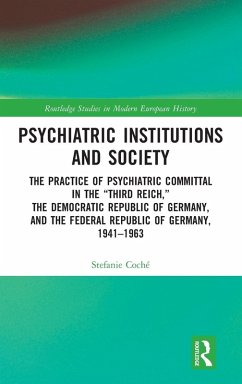The book probes how the serious and sometimes fatal decision was made to admit individuals to asylums during Germany's age of extremes. The book shows that - even during the Nazi killing of the sick - relatives played an even more important role in most admissions than doctors and the authorities.
In light of admission practices, this study traces how ideas about illness, safety, and normality changed when the Nazi regime collapsed in 1945 and illuminates how closely power configurations in the psychiatric sector were linked to political and social circumstances.
In light of admission practices, this study traces how ideas about illness, safety, and normality changed when the Nazi regime collapsed in 1945 and illuminates how closely power configurations in the psychiatric sector were linked to political and social circumstances.

